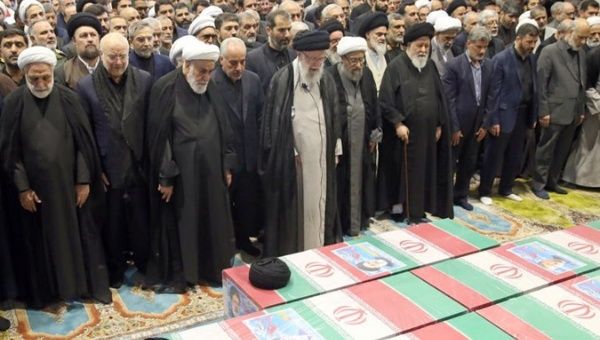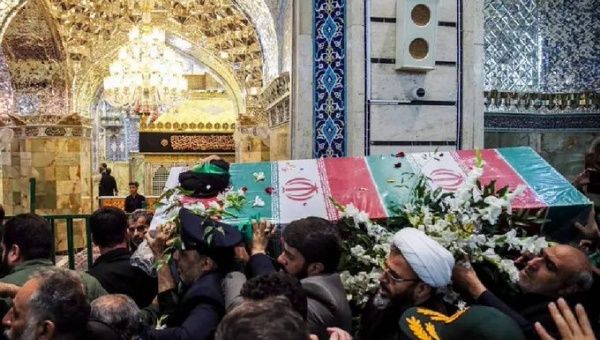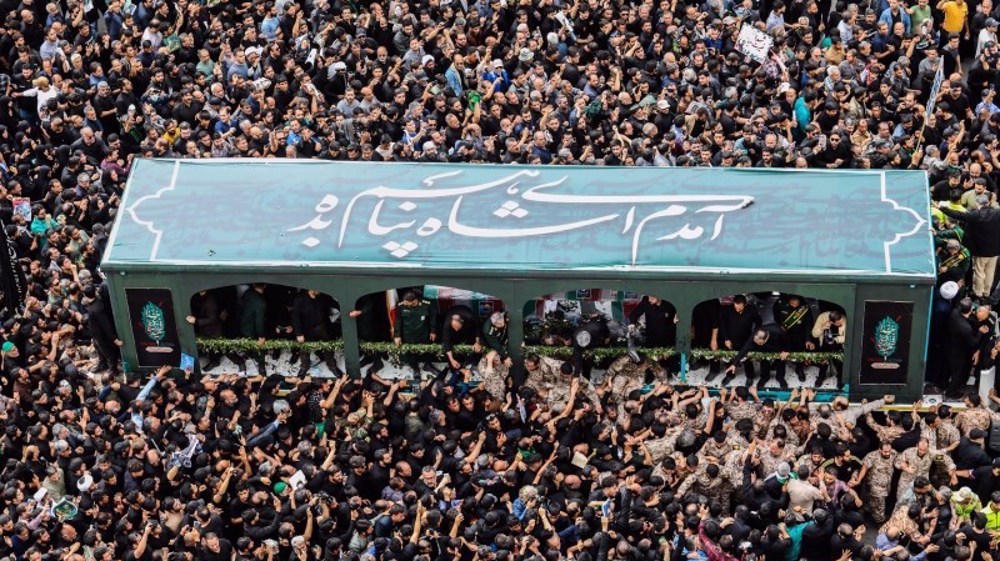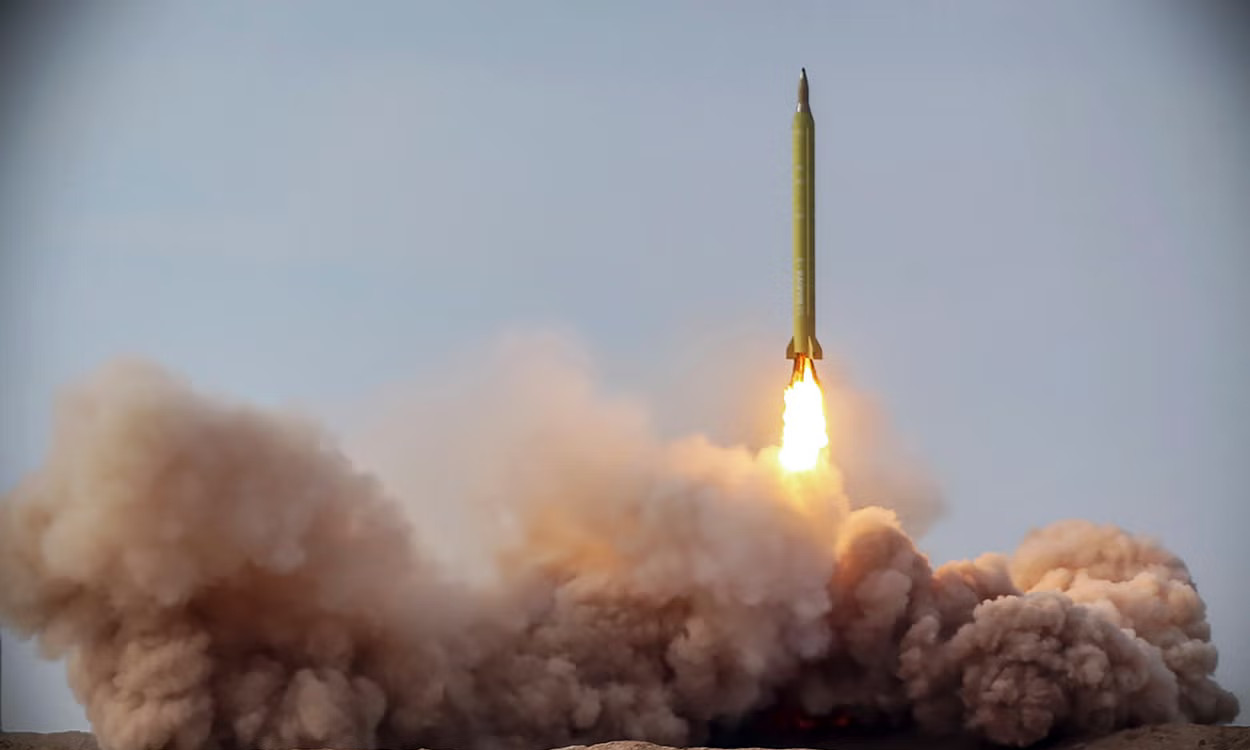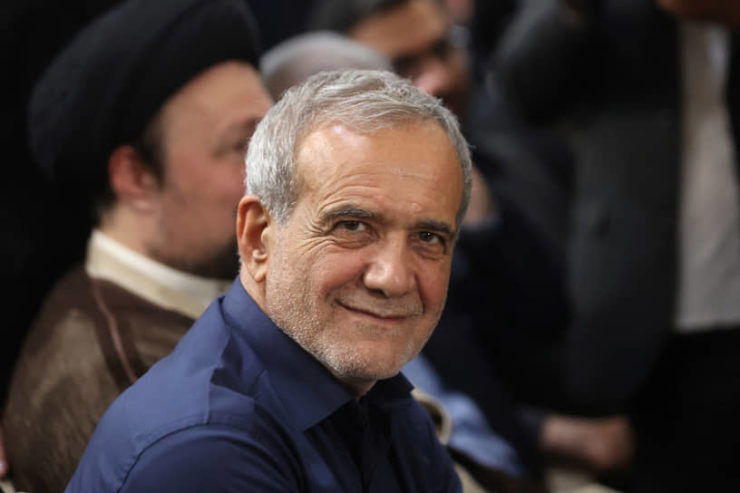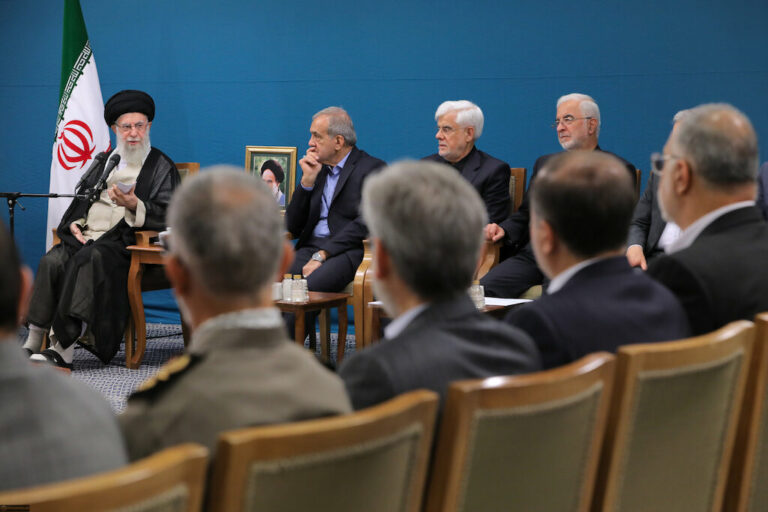How are elections organized in Iran?
colonelcassad
June 18, 22:15

A very informative article about the structure of organizing elections in Iran.
From seminary to the Council of Experts: who and how gets into the Iranian Electoral College
Shiism is the second major branch of Islam after Sunnism. The Shiite clergy in Iran has been unevenly studied. On the one hand, there are a number of studies that detail the ideological and political transformations within it. On the other hand, little is known about the socio-demographic composition of the Shiite clergy.
Iran has an elected body consisting entirely of clergy, the Council of Experts (COE). Ilya Vaskin, senior lecturer and junior researcher at the Center for the Study of the Middle East, Caucasus and Central Asia (CSMECCA) of the Institute of Classical Oriental and Antiquity at the Higher School of Economics, analyzed data on members of the Council of Experts and discovered what changes have taken place in the politicized part of the Iranian clergy since 1983 .
What are the specifics of the Shiite clergy?
Theological seminaries
Future representatives of the Shiite clergy undergo socialization through theological seminaries. In these organizations, students are cut off from the outside world for long periods of time and lead a reclusive life together. This phenomenon can be called a “total institution,” using the terminology of sociologist Erving Goffman. Seminary students have their own shared norms, traditions, and rituals that differ from those of members of other groups.

Seminary of Qom
The most important religious institute in Iran is the institute of ulema, theologian scholars. They interpret the Koran, know Shiite law and preserve religious traditions. The title of ulema is acquired exclusively through training in a madrasah. Madrasah is one of the types of Islamic theological seminaries. In 2019, there were approximately 200,000 ulema in Iran, including both seminary students and seminary graduates.
The leading centers of Shiism in Iran are the seminaries of Qom and Mashhad. Total in Iran at the beginning of the 2010s. there were about 218 male seminaries and 277 female seminaries. Each seminary annually enrolled an average of 35–60 male and female students.
The social background of seminary students is currently difficult to assess. But, for example, in the mid-1970s, in a madrasah in Qom, out of 236 students, about 60% came from families of landowners, about a quarter from families of the clergy, and the rest from families of middle-income traders and shopkeepers.
Religious hierarchy
Another important feature of the Shiite clergy is the presence of a hierarchy. This is one of the differences between Shiites and Sunnis, who have no religious hierarchy at all.
The origins of the hierarchy of the Shia clergy go back to the debates of the 16th–17th centuries. between two currents of Shiite Islam: Usulites and Akhbarites. From the point of view of the Akhbarites, understanding the sacred texts does not require reason, since the texts themselves are perfect and comprehensive. And the Usulites believe that religious works must be interpreted through logic and reason (aql). In their view, the sacred texts can be understood by those who are more logical and reasonable than others. This division of the clergy according to the degree of enlightenment led to the emergence of a hierarchy.
In the ideological conflict between these two groups, the Usulites “won”, so the religious hierarchy spread throughout Iran.

Representatives of the clergy Sadek Amoli Larijani (center) and Hassan Khomeini (right), 01/31/2018
The hierarchy consists of six levels. They differ in capabilities and powers: if the first one can only wear religious clothing, then starting with the second it becomes possible to receive donations, with the fourth one can become a mujtahid, and the last one can issue fatwas - publish religious interpretations about social, political and other problems. The last level of the hierarchy is usually called marja ("source of religion"), after marja comes the highest spiritual title - marja-at taqlid.
Hierarchy of the Shiite clergy in Iran

Religious rites
The religious rites of the Shiite clergy differ from those performed by ordinary Iranians.
Firstly, religious organizations play an important role in Shiite rituals: madrassas, mosques, graves of “saints”, tombs of imams and their descendants, theological libraries and museums.
Secondly, the daily life of Shiites is strictly regulated by the Koran and Sharia. Every Shiite must observe his religious duties:
recognize monotheism, the prophetic mission of the Prophet Muhammad and the Imamate;
perform ablution and perform three evening prayers (namaz);
observe fasting (saum, uraza, ruse);
make donations and pay religious tax (zakat);
make pilgrimages to Mecca (major hajj) and holy Shiite places: Mashhad, Qom, Najef and Karbala (small hajj).

Supreme Leader of Iran Ali Khamenei performs Friday prayers, 01/17/2020 Source
Review of the political history of the Shiite clergy
Separation of Shiite Islam from the state
In 1736, a transformation of the political system of Iran took place: the Safavid monarchy, where the head of state was considered the head of Shiite Islam, was replaced by the dualistic Qajar monarchy , in which political power belonged to the Shah, and religious power to the clergy.
This made Shia institutions independent of the state. The Shah was considered the shadow of Allah on Earth, but the real religious authority was with the clergy. This transformation took place thanks to the rise to power of Nadir Shah Afshar (1736–1747), the founder of the Afsharid dynasty.

Portrait of Nadir Shah Afshar. 1740
The separation of political and religious power in Iran later became the basis for clergy participation in the Tobacco Movement of 1890–1892. and the Constitutional Revolution of 1905–1911.
Crises and revolutions
In the early 1960s, a political and economic crisis erupted in Iran. Due to the ineffective economic policies of the Shah's government, inflation increased sharply in the country. Between 1957 and 1960, the number of strikes and anti-Shah protests increased significantly.

Ruhollah Khomeini during his speech on June 3, 1963.
Protest actions were coordinated by the Shiite clergy through mosques. One of these coordinators was Ayatollah Ruhollah Khomeini. Although the protests were largely unsuccessful, the government carried out land reform and began to implement the social and political modernization of Iran.
At the same time, an ideological revolution was taking place. It consisted in the fact that the clergy turned Islam into an ideology, the foundation of which was the new theory of theocratic government “velayate faqih”.
The same pattern of protest mobilization repeated itself in the 1970s during the Islamic Revolution. As a result, the clergy became the most powerful political player in the country.

Ayatollah Khomeini arrives in Iran on Air France, 02/01/1979
After the Islamic Revolution, the Shiite clergy modernized and became bureaucratic. Religion became a form of symbolic capital, and the state became its distributor. This in turn led to changes within the clergy. Mosques became recruiting grounds for the Islamic Revolutionary Guard Corps (Basij) militia. They began to be managed by the Mosque Affairs Committee and the Friday Prayer Policy Council.
In addition, the state has established tight control over the clergy through the Special Religious Court and the 83rd Imam Sadiq Brigade, which fight dissent in seminaries. The clergy also began to supervise religious charitable quasi-state organizations.
Influence of Western social thought and philosophy
Beginning in the second half of the 19th century, the clergy became acquainted with the ideas of Western social thought and philosophy. Often Western ideas and Shiism were combined, resulting in strange ideological hybrids. In particular, the clergy could advocate for human rights and the rule of law, and this would not surprise anyone.
An example of the influence of Western ideas is the former Iranian President Mohammad Khatami (1997–2005). He studied at the Qom Seminary and completed a bachelor's degree in philosophy at the University of Tehran. He was very interested in Western philosophy. Shortly before the revolution, in 1978–1980, he worked in Germany, at the Islamic Center of Hamburg.
During his presidential terms, Khatami began to hold municipal elections, which were enshrined in the 1979 Constitution, but were held for the first time since the Islamic Revolution only in 1999. He also began to actively build relations with Western countries, relying on the concept of “dialogue of civilizations” he invented " He created this concept in opposition to the then popular idea of the “Clash of Civilizations” by Samuel Huntington, outlined in his treatise “The Clash of Civilizations and the Transformation of World Order” (1996).
During his speeches in the Majlis, Khatami could quote Kant and Weber, and during international visits he communicated with representatives of democratic countries in a language they understood and was close to them.

Iranian President Mohammad Khatami (1997–2005) at the World Economic Forum in Davos, 2004.
The liberalism of his period allowed him to invite Western thinkers such as Jurgen Habermas, Antonio Negri, Richard Rorty to the country. During their visit, the lecture halls were usually full. These scholars discussed various problems of social sciences with the most progressive mullahs. Both sides understood each other well, sometimes even coming to a common opinion.
The Council of Experts as a Political Institution
After we have briefly talked about the Shiite clergy in Iran, let us turn to the Council of Experts, which is the subject of Ilya Vaskin’s research.
The Council of Experts is an electoral college composed entirely of clergy. Its task is to elect the Supreme Leader of Iran and control his activities.
There are similar electoral colleges in the USA, Macau, Hong Kong and some other countries. The closest similar body is the College of Cardinals of the Holy See, which elects the Pope. The difference is that the College of Cardinals elects the religious leader of the Catholics and the political leader of the Papal State. And the Council of Experts chooses the political leader of the Shiites, but not the religious one.
The emergence of the Council of Experts is associated with the ideology of the velayate faqih. According to it, the Supreme Leader, like... O. the twelfth imam, must be elected by the most qualified clergy. The Council is elected once every eight years in single- and multi-member constituencies. Initially, the Council was created to edit and finalize the Constitution of Iran, but during the discussion it received new functions. Its main goals were control over the activities of the Supreme Leader and the election of a new one in the event that the current one, for one reason or another, cannot fulfill his duties.
In fact, the Council never protested against the actions of both Supreme Leaders. However, the opinions of its members carried weight, for example during the Green Movement of 2009–2011, which was associated with the alleged fraud of the presidential elections in favor of Mahmoud Ahmadinejad.

Building of the Council of Experts.
Despite the fact that the Supreme Leader is elected by the Council of Experts and the Council monitors the activities of the Supreme Leader, formally the leader and members of the Council of Experts are equal before the law. Just like all citizens of the country. At the same time, the Council is not a significant institution for ordinary Iranians; they rarely discuss its activities. For them, the Supreme Leader, the Mejlis, the President, and the Supervisory Council play a greater role.
The first elections to the Council of Experts were held in 1983. The total number of members of the Council fluctuated on average in the range of 85–90 people. The increase in the number of members in the third and fourth convocations is associated with the deaths of their predecessors and the holding of re-elections to the Council.

The turnout for the elections to the SE for the first time was 77%, at the next elections it fell to 37%, at the third - 46%, at the remaining ones - 60-65%. Elections of Council members are fair, but not free: the results are considered fairly, but the Supervisory Council blocks all potential opposition and simply suspicious candidates, sometimes leaving exactly one participant in single-mandate constituencies.
For example, during the third convocation, secular candidates applied to participate in the elections, but they were rejected. Also during the elections to the fourth SE, the Supervisory Board allowed women and secular candidates to participate in the elections, but later disqualified them for non-compliance with Islamic principles.

Meeting of the Council of Experts, 03/12/2019
Sources and methods of analysis
The purpose of Ilya Vaskin’s research is to identify patterns in the recruitment of Shiite clergy to the Council of Experts.
The population for analysis consists of all members of the Council who served on this Council at least once: a total of 216 people and 446 observations.
One observation is one SE member elected for one term. If he was re-elected twice, then this case corresponds to two observations, etc. Moreover, some members of the Council were re-elected up to five times.
The main source of data is the work of Mehrzad Boroujerdi and Kourosh Rahimkhani “Postrevolutionary Iran: A Political Handbook” [2], which contains biographies of more than 3,000 representatives of Iranian elites after the Islamic Revolution, as well as publicly available sources.
The method of analysis is structural-biographical. All biographies were standardized according to the biographical questionnaire, then the results were calculated for each of the characteristics according to the convocations of the SE.
The questionnaires were standardized by:
age at entry into office;
city and province of birth;
military service during the Iran-Iraq War;
seminaries where religious education was received;
countries, universities and specializations in secular universities, by level of education.
Gender, ethnicity, and knowledge of foreign languages had to be excluded either due to lack of data or due to the lack of relevant individuals: women never even became candidates for members of the SE.
Age of members of the Council of Experts
The age distribution of members of the Council of Experts shows a high representation of older politicians, which is generally typical for elected collective authorities. Even in the first convocation, the proportion of its members over 50 years of age was almost 70%, and in all subsequent convocations the number of Council members over the age of 60 prevails.
This trend may be associated with the general aging of the Iranian clergy. It is also possible that this age distribution is influenced by the not very developed system of social mobility among the Iranian clergy, which does not allow younger ulemas to take seats on the Council of Experts.
At the same time, if you look at practice, it is difficult to say whether the aging of the clergy affects the decisions made - they are difficult to fix in principle. All that can be said about the younger members of the Council of Experts is that they are more open to Western philosophy; some of them defended dissertations on relevant topics.

Veterans of the Iran-Iraq War
Among the Iranian clergy, many ulema took part in the Iran-Iraq War (1980–1988). Initially, in the first convocation of the Council of Experts, the share of veterans was 3%. Then it gradually increased, reaching 13% in the 5th convocation. Such an increase in the share may be associated with the death of elderly members of the SE and their replacement by the younger generation. The comparative insignificance of growth can be explained by the slowness of change and the stability of the social structure of the clergy, as well as its low involvement in military operations.
Politically, the actions of the ulema who went through the war are difficult to distinguish from the rest. Therefore, the immediate effect of a military career is not visible.

Political affiliation
Political affiliation is also an important indicator of changes in the Council of Experts.
The two key non-partisan organizations in the Council are the Association of Militant Clergy (AMC) and the Society of Seminary Teachers of Qom (OSSK). In addition to them, there is also the reformist Organization of Militant Clergy, which advocates liberalization of the regime. However, its members are simply not allowed to participate in the elections to the Council of Experts.
Despite the name, AED and OPSC are neither military nor pedagogical in the strict sense. The AED unites the conservative Iranian clergy and serves as their point of coordination. OPSC does the same thing, only its focus is on mullahs-scientists and mullahs-teachers who work in Qom seminaries and are their graduates.
The share of members of these two organizations in the Council was consistently 70–100%, with the exception of the third convocation. At that time, 54% of the members belonged to the AED, and the Society of Seminary Teachers of Qom did not participate in the elections as a sign of boycott due to the disqualification of its candidates by the Supervisory Board.

Political parties arose in the Council starting from the third convocation. Initially, their share was 13%, and in the fifth convocation it reached 63%. It is important to note that all SE parties are reformist or moderate. However, they were created specifically for specific elections and existed only for one election cycle, and then were replaced by others.
If you look at political affiliation not by organizations, but by factions, you can see a long-term trend of a decrease in the share of conservatives due to an increase in the share of moderates and reformers. In the first two convocations, the majority of members were conservatives (76–100%), and then moderates and reformers emerged, who gradually increased their representation from 13% to 63%. At the same time, some SE members have two or three affiliations, and their share grew accordingly from convocation to convocation.
The dynamics of political pluralization can be explained by the long-term transformation of the political regime of the country as a whole. Beginning in 1989, especially between 1997 and 2005, the country adopted a new law on political parties and loosened restrictions on participation in elections for intra-system candidates with more diverse positions. After 2005, the liberalization of the regime was curtailed, but the interest groups and political parties it created remained in the political field.
Education of Council Members
As already mentioned, there is a network of theological seminaries in Iran, currently there are about 250 of them. The most important of them is the Qom Seminary, the center of Shiite theology. Another important center is the Najaf Seminary in Iraq.
The results of the analysis show that it was in these two seminaries that the majority of the members of the Council of Experts studied. There are also graduates of the Mashhad Seminary on the Council, but their share is much smaller - from 2% to 7%, depending on the convocation.

As for secular education, the proportion of members of the Council of Experts with higher education has continuously grown. And if in the first convocation there were only 2% of bachelors, then by the fifth there were 23%, masters - 22%, PhD - 18%.
These results indicate that the Iranian clergy as a whole is not isolated from the country's trend towards the spread of higher education. The prestige of secular education is increasing, including among the Iranian clergy.

Members of the Council of Experts, educated at secular universities, have three key specializations: law, philosophy and theology. In the second convocation, only legal education was represented, but then representatives of other specialties increased their presence. Since the fourth convocation, 50% of the SE members have a theological education received at a secular university. The share of lawyers and philosophers who also received a secular education ranges between 19% and 44%.
Economist Ali-Ahmad Salami, who received his master's degree in economics from the University of Karachi, was present at the second and fifth convocations of the CoE. Also different from the rest is Mohsen Qumi (3rd–5th convocations), who received a bachelor's degree in educational sciences from the University of Legal Sciences and Administrative Services (Qom branch).

Note: the amount for individual convocations may be more than 100%, since one member of the Council of Experts may have two or more specializations.
This distribution of scientific specializations can be explained by two factors. Firstly, after selection at the Supervisory Board level, only candidates with the appropriate qualifications remained. Secondly, the clergy, due to their initial education received in the seminary, are more inclined to study philosophy, theology and law. It is these disciplines that intersect more than any other with the educational programs of seminaries.
Provincial origin
Analysis of origin shows that 49–64% of the members of the Council of Experts, depending on the convocation, come from nine Iranian provinces. They are listed in the table.

The high proportion of people from Isfahan province (10–15%) can be explained by the fact that the city of Isfahan was the capital of Persia during the Safavid dynasty (1501–1736). The social, cultural, religious and other capital accumulated by the city served as the basis for the creation of strong social ties between the country's elites. In addition, Isfahan is the second largest city in the country, with developed industry, education and culture.
As for East Azerbaijan, its presence in second place (7–12%) is explained by the fact that Ayatollah Ali Meshkini, the first chairman of the Council of Experts (1983–2007), himself came from this province and sought to support his fellow countrymen. This also explains the significant share of immigrants from Kerman (4–6%), where Akbar Hashemi-Rafsanjani, the President of Iran in 1989–1997, came from. and Chairman of the Council of Experts in 2007–2011.
And the share of people from Qom is relatively small - 1–9%, depending on the convocation. Given that Qom is the key religious center of the country, it is now difficult to explain why the share of SE members from there is so low.
Results of the study of the Council of Experts
The Iranian clergy in the Council of Experts is stable and does not change much. However, the proportion of members with higher education is noticeably growing, which indicates the impact of the trends of the country as a whole on the Council. Patrimonial connections, as well as the status of the seminaries where applicants received religious education, also play a significant role in the recruitment of elites to the SE.
The relative stability of the composition of the Council of Experts can be explained by several factors:
It is composed of the clergy as such. The clergy changes relatively slowly due to the fact that it is a total institution.
The Council of Experts is elected for a long term (8 years), which contributes to a much slower rotation of its members compared to the Mejlis.
A significant factor may be the restrictions of the Supervisory Board, cutting off potentially competitive candidates in elections that could upset the balance within the institution.
(c) Ilya Vaskin
https://sysblok.ru/oriental/iz-seminari ... orshhikov/ - zinc
convocations the number of Council members over the age of 60 prevails.
This trend may be associated with the general aging of the Iranian clergy. It is also possible that this age distribution is influenced by the not very developed system of social mobility among the Iranian clergy, which does not allow younger ulemas to take seats on the Council of Experts.
At the same time, if you look at practice, it is difficult to say whether the aging of the clergy affects the decisions made - they are difficult to fix in principle. All that can be said about the younger members of the Council of Experts is that they are more open to Western philosophy; some of them defended dissertations on relevant topics.
Veterans of the Iran-Iraq War
Among the Iranian clergy, many ulema took part in the Iran-Iraq War (1980–1988). Initially, in the first convocation of the Council of Experts, the share of veterans was 3%. Then it gradually increased, reaching 13% in the 5th convocation. Such an increase in the share may be associated with the death of elderly members of the SE and their replacement by the younger generation. The comparative insignificance of growth can be explained by the slowness of change and the stability of the social structure of the clergy, as well as its low involvement in military operations.
Politically, the actions of the ulema who went through the war are difficult to distinguish from the rest. Therefore, the immediate effect of a military career is not visible.
Political affiliation
Political affiliation is also an important indicator of changes in the Council of Experts.
The two key non-partisan organizations in the Council are the Association of Militant Clergy (AMC) and the Society of Seminary Teachers of Qom (OSSK). In addition to them, there is also the reformist Organization of Militant Clergy, which advocates liberalization of the regime. However, its members are simply not allowed to participate in the elections to the Council of Experts.
Despite the name, AED and OPSC are neither military nor pedagogical in the strict sense. The AED unites the conservative Iranian clergy and serves as their point of coordination. OPSC does the same thing, only its focus is on mullahs-scientists and mullahs-teachers who work in Qom seminaries and are their graduates.
The share of members of these two organizations in the Council was consistently 70–100%, with the exception of the third convocation. At that time, 54% of the members belonged to the AED, and the Society of Seminary Teachers of Qom did not participate in the elections as a sign of boycott due to the disqualification of its candidates by the Supervisory Board.
Political parties arose in the Council starting from the third convocation. Initially, their share was 13%, and in the fifth convocation it reached 63%. It is important to note that all SE parties are reformist or moderate. However, they were created specifically for specific elections and existed only for one election cycle, and then were replaced by others.
If you look at political affiliation not by organizations, but by factions, you can see a long-term trend of a decrease in the share of conservatives due to an increase in the share of moderates and reformers. In the first two convocations, the majority of members were conservatives (76–100%), and then moderates and reformers emerged, who gradually increased their representation from 13% to 63%. At the same time, some SE members have two or three affiliations, and their share grew accordingly from convocation to convocation.
The dynamics of political pluralization can be explained by the long-term transformation of the political regime of the country as a whole. Beginning in 1989, especially between 1997 and 2005, the country adopted a new law on political parties and loosened restrictions on participation in elections for intra-system candidates with more diverse positions. After 2005, the liberalization of the regime was curtailed, but the interest groups and political parties it created remained in the political field.
Education of Council Members
As already mentioned, there is a network of theological seminaries in Iran, currently there are about 250 of them. The most important of them is the Qom Seminary, the center of Shiite theology. Another important center is the Najaf Seminary in Iraq.
The results of the analysis show that it was in these two seminaries that the majority of the members of the Council of Experts studied. There are also graduates of the Mashhad Seminary on the Council, but their share is much smaller - from 2% to 7%, depending on the convocation.
As for secular education, the proportion of members of the Council of Experts with higher education has continuously grown. And if in the first convocation there were only 2% of bachelors, then by the fifth there were 23%, masters - 22%, PhD - 18%.
These results indicate that the Iranian clergy as a whole is not isolated from the country's trend towards the spread of higher education. The prestige of secular education is increasing, including among the Iranian clergy.
Members of the Council of Experts, educated at secular universities, have three key specializations: law, philosophy and theology. In the second convocation, only legal education was represented, but then representatives of other specialties increased their presence. Since the fourth convocation, 50% of the SE members have a theological education received at a secular university. The share of lawyers and philosophers who also received a secular education ranges between 19% and 44%.
Economist Ali-Ahmad Salami, who received his master's degree in economics from the University of Karachi, was present at the second and fifth convocations of the CoE. Also different from the rest is Mohsen Qumi (3rd–5th convocations), who received a bachelor's degree in educational sciences from the University of Legal Sciences and Administrative Services (Qom branch).
Note: the amount for individual convocations may be more than 100%, since one member of the Council of Experts may have two or more specializations.
This distribution of scientific specializations can be explained by two factors. Firstly, after selection at the Supervisory Board level, only candidates with the appropriate qualifications remained. Secondly, the clergy, due to their initial education received in the seminary, are more inclined to study philosophy, theology and law. It is these disciplines that intersect more than any other with the educational programs of seminaries.
Provincial origin
Analysis of origin shows that 49–64% of the members of the Council of Experts, depending on the convocation, come from nine Iranian provinces. They are listed in the table.
The high proportion of people from Isfahan province (10–15%) can be explained by the fact that the city of Isfahan was the capital of Persia during the Safavid dynasty (1501–1736). The social, cultural, religious and other capital accumulated by the city served as the basis for the creation of strong social ties between the country's elites. In addition, Isfahan is the second largest city in the country, with developed industry, education and culture.
As for East Azerbaijan, its presence in second place (7–12%) is explained by the fact that Ayatollah Ali Meshkini, the first chairman of the Council of Experts (1983–2007), himself came from this province and sought to support his fellow countrymen. This also explains the significant share of immigrants from Kerman (4–6%), where Akbar Hashemi-Rafsanjani, the President of Iran in 1989–1997, came from. and Chairman of the Council of Experts in 2007–2011.
And the share of people from Qom is relatively small - 1–9%, depending on the convocation. Given that Qom is the key religious center of the country, it is now difficult to explain why the share of SE members from there is so low.
Results of the study of the Council of Experts
The Iranian clergy in the Council of Experts is stable and does not change much. However, the proportion of members with higher education is noticeably growing, which indicates the impact of the trends of the country as a whole on the Council. Patrimonial connections, as well as the status of the seminaries where applicants received religious education, also play a significant role in the recruitment of elites to the SE.
The relative stability of the composition of the Council of Experts can be explained by several factors:
It is composed of the clergy as such. The clergy changes relatively slowly due to the fact that it is a total institution.
The Council of Experts is elected for a long term (8 years), which contributes to a much slower rotation of its members compared to the Mejlis.
A significant factor may be the restrictions of the Supervisory Board, cutting off potentially competitive candidates in elections that could upset the balance within the institution.
(c) Ilya Vaskin
https://sysblok.ru/oriental/iz-seminari ... orshhikov/ - zinc
Google Translator







